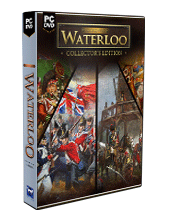

Timid dogs were instantly eliminated from the program. For this early examination, the weeding out process required the potential doggy recruit to follow his owner day or night across different terrain, to behave properly in climbing stairs, in going into a darkened room, in crossing ditches and streams, on hearing gunfire, and more. The German Army had special eight-week schools for training their dogs in WW2, beginning with testing the animals’ potential at age six months. The Germans regarded German shepherds as the canine “Master Race” and well over half of their war dogs were of this breed, although Doberman Pinschers and other breeds were also used in lesser numbers. Crosses of these breeds also were acceptable.” By the fall of 1944 the number of preferred breeds had been reduced to seven, German shepherds, Belgian sheep dogs, doberman pinschers, farm collies, Siberian huskies, Malamutes and Eskimo dogs. Among these were Great Danes, whose large size made them difficult to train, and hunting breeds in general because they were too easily diverted by animal scents. Experience revealed, however, that even for sentry duty some breeds were unsatisfactory. Army’s war dogs, according to the Quartermaster Corps, “In 19, when practically all of the dogs were trained to perform the comparatively simple tasks involved in sentry duty more than thirty breeds of both sexes were considered suitable for military service. This article was first published in the December 2016 edition of They were nicknamed, perhaps inevitably, Devil Dogs, from the German nickname for the American Marines during combat in World War I. The Doberman Pinscher Club of America organized the Marines’ “recruiting drive” and the Dobermans became the official dog of the USMC. The hands-down favorite of the United States Marine Corps in the Pacific Theater was the doberman pinscher.

Mongrels with Alsatian blood and even some outright mutts could learn and perform quite well and were capable of being quiet, dependable, and rugged. Later, they found high pedigrees to be less important than originally thought.

Military Breeds of Choiceįor their war dogs, the British Royal Army Veterinary Corps preferred the Alsatian, which is merely another name for the German shepherd, but also used dobermans, airedales, and rottweilers. When it came to versatility, however, warriors of the canine variety saw service in the widest and most diverse array of military roles, such as message carrying, patrolling, guarding, tracking, mine detecting, search and rescue, and even as antitank weapons. In addition to draft horses, pack mules, and carrier pigeons, animal warriors also included Finnish reindeer and camels. The list of animals used by the various militaries around the world was diverse and, in some cases, a little odd. For instance, despite Nazi propaganda films of mechanized Blitzkriegs consisting of panzers and half-tracks, in reality the majority of the German Army’s artillery was still horse drawn. By Bob CashnerĪnimals of several kinds were used during WW2 by the military forces of belligerents both large and small. Various dogs in WW2 were responsible for saving countless lives in the Pacific. Marine Private Rez Hester, sleeps on the embattled island of Iwo Jima. Butch the doberman pinscher stands watch while his handler, U.S.



 0 kommentar(er)
0 kommentar(er)
